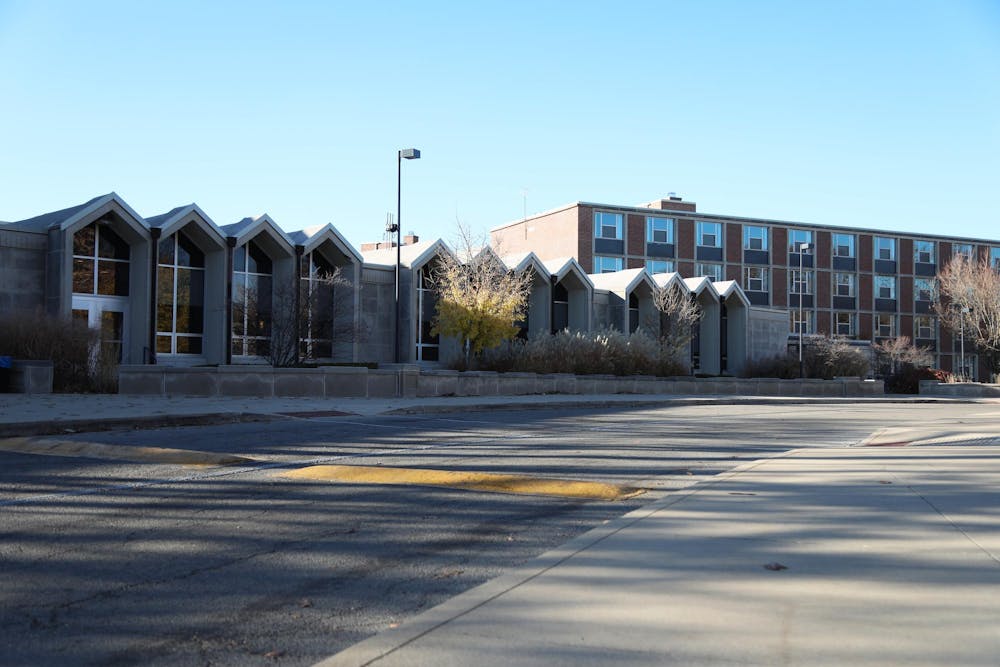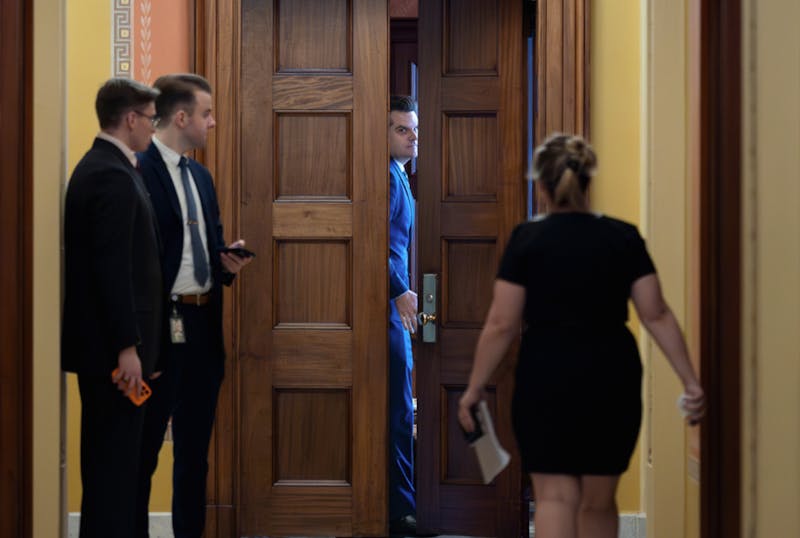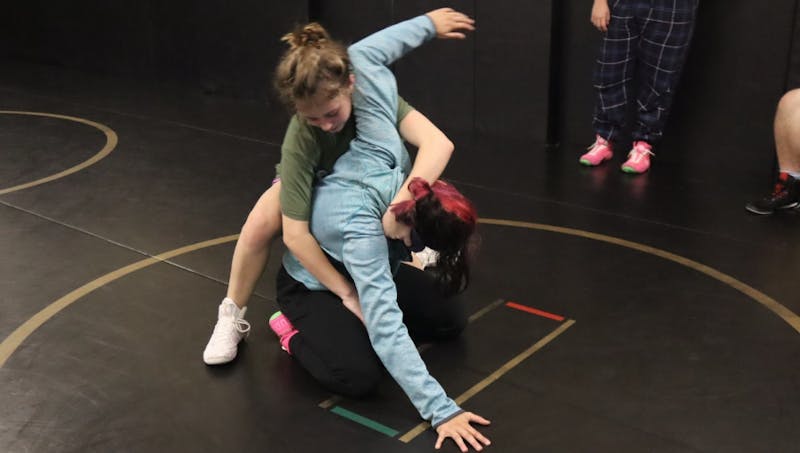Gary Reynolds has been worried since his son, Case, was in high school. A gun-related incident in their hometown Noblesville, Indiana, school district permanently changed how he thought about Case’s education.
“Ever since then, it’s scary and you think about it every single day,” Reynolds said.
Case, a first-year sociology major, has grown up part of the post-Columbine generation, where guns in schools is the new normal.
“It’s terrifying to me and honestly,” Gary Reynolds said. “It just seems that there is not a safe space anymore – but at schools and universities, there really should be.”
Reynolds, like other parents to students on campus at Ball State University, signed up for campus alerts and advisories when Case moved to campus in August.
Reynolds received an email as the University Police Department (UPD) was investigating a reported gun shot in Studebaker West Sept. 16. He also received an email Nov. 8 from the advisory system explaining that two students had been charged for having weapons on campus; one student in Noyer Complex who had discharged a weapon in his dorm room Nov. 6, injuring himself, and the other student in Woodworth Complex, who police believe had the first student’s firearm and an additional firearm in his dorm Nov. 8, according to the advisory email. UPD responded to the incident Nov. 7 and informed the campus community the following day.
Spokesman Greg Fallon explained the system used by the university that community members can opt in to. Alerts are sent as soon as possible via text and are used when there is an immediate threat to campus and action is required, while advisories are sent later when it is determined there is no threat to campus.
“I believe that first text message needs to go out immediately,” Reynolds said. “You know, for one, I know that guns are illegal on campus. So they shouldn't be there at all. So when that does happen, a notification needs to go out immediately via text and it should be a shelter in place and as much information that is known at the time, but at least shelter in place. Now, we have this incident and I'm curious to know, and we haven't been informed yet, how is it that this occurred on Monday, and no one was made aware until 48 hours later?”
Reynolds, along with others who opt in for advisory text messages and email alerts, did not receive any notification when a gun had been found in a student’s dorm after the student fired it multiple times in an off-campus incident.
The incident occurred after Muncie Police Officers responded to a report of shots fired Oct. 21 on Granville Ave., according to the probable cause affidavit. Officers identified and located the shooter, a Ball State student, and found the firearm in his dorm on campus.
The incident in Noyer last week marks the fourth incident involving a firearm in a residence hall this semester. It is the second time that a firearm has been discharged in a residence hall. The university did not use an emergency notification text alert in either of those incidents, according to Vice President of Student Affairs Ro-Anne Royer Engle.
Some students question the university’s communication decisions in these instances.
“To be honest with you, it does kind of scare me a little bit,” said Logan Campbell, a second-year architecture major. “Just because the campus did say they pride themselves on communicating with students about things that happen.”
Campbell was not in Noyer Complex at the time of the incident Nov. 8, but expressed his concern over the university’s communication.
“It’s dangerous. That’s a gun discharged in the building,” he said. “People should know about it. If they have questions about it, if they have questions or anything, I think information should be spread immediately so people are up to date. It’s serious, but it wasn’t like a shooter this time, but if we don’t know about it, how are we supposed to know?”
Engle said the handling of situations of this nature is on a case-to-case basis and UPD makes an assessment about risk level when it arrives to the situation.
“There may be specifics about situations [and] specific incidents that make us determine that this is not an imminent threat and I think there is a difference between that and a firearm being discharged,” Engle said. “Although a firearm being discharged in a residence hall could be a threat, it does not mean in the immediate that it is. So it is a case-by-case situation, and in the cases that we have had on campus this semester, they have not been deemed an imminent, immediate threat that we need students to take action about.”
She went on to explain that in the specific situation at Noyer, residential staff there were not provided any additional information earlier than anyone else on campus, but the situation was communicated between upper-level housing.
“The Noyer staff did not necessarily get information before everybody else. The housing leadership team was aware and prepared and worked with the staff and met with the Noyer and Woodworth staff as part of their process in responding to the information, but the Noyer staff did not get information ahead of everyone else,” Engle said.
Engle emphasized the want to know versus the need to know in situations like the one in Noyer Complex. Ana Diaz, a first-year in the pre-nursing program who lives in Noyer Complex, was unaware of the situation until the email was sent on Nov. 8.
“[It’s] not the best feeling honestly, since there is a lot of gun violence that has been going on, especially with school shootings everywhere.
“It is important that we are aware of what’s going on, especially because we live here,” Diaz said. “So it’s not like, oh, we just come to visit, this is where we’re staying at. It’s definitely a need to know.”
A supporter of gun rights and a gun owner, Reynolds said that anytime a gun is discharged on campus, students should know immediately because if there is a gun found, there is an inherent danger to the student population.
“I don't think you should ever wait for an investigation before any communication goes out,” Reynolds said. “That to me just seems ludicrous.”
In response to the most recent incident in Noyer Complex, President Geoffrey Mearns tasked Engle to establish an action team to address campus safety. Engle said that the members of the action team would be identified by Nov. 17, with action items to be implemented in the spring semester and completed by the end of the Fall 2023 semester. Additionally, the action group will continue to meet during the Spring 2024 semester to create long-term actions.
“If there is an ongoing threat, they’re always going to err on the side of more information so that students, faculty and staff can take the necessary steps to protect themselves,” Mearns said. “When the threat has been neutralized, then I think sometimes they’re going to exercise a little bit more patience to gather the information and communicate it out.”
Because of Engle’s explanation about the university relying on UPD expertise to assess a situation to determine the communication needed, the Ball State Daily News requested to speak with Assistant Vice President for Public Safety and Chief of Police John Foster. The request was denied by Fallon.
“We’re confident there are no additional details Chief Foster can share with you beyond Ro-Anne’s answers during your interview,” Fallon said via email.
Ball State campus community members are encouraged to report suspicious activity to University Police. Specifically, any individual who has knowledge of a firearm on university property should immediately contact UPD at 765-285-1111.
Contact Daniel Kehn with comments daniel.kehn@bsu.edu or on X @daniel_kehn.





The Daily News welcomes thoughtful discussion on all of our stories, but please keep comments civil and on-topic. Read our full guidelines here.